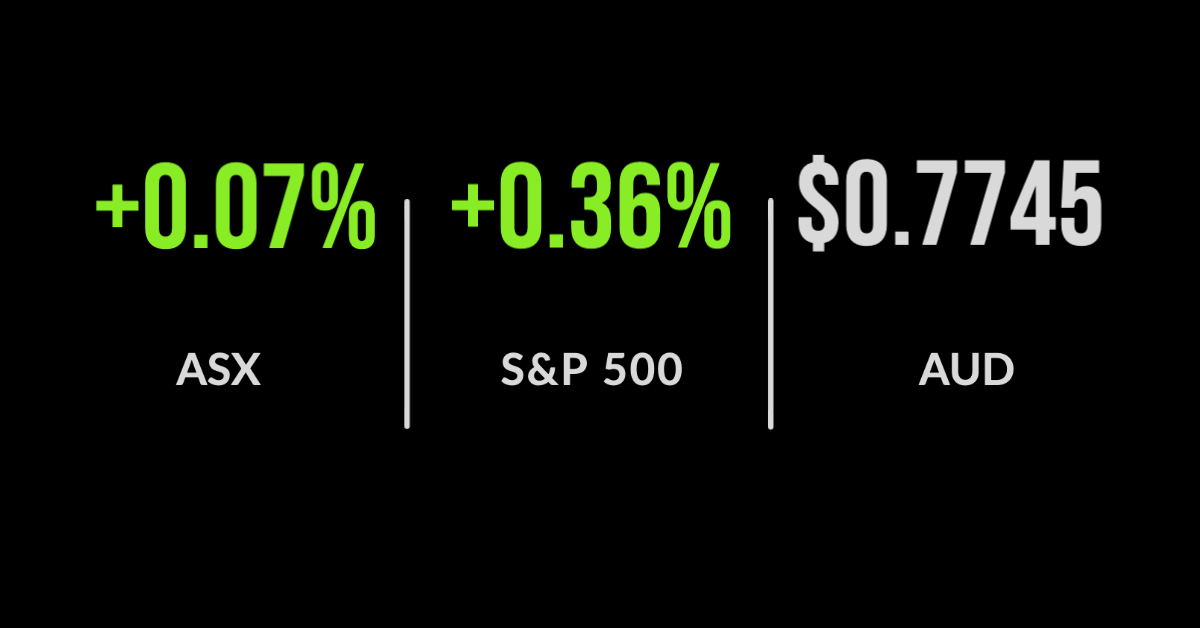ASX finishes 0.1% in front after weak start
Rough day but positive finish, tech leads the way, iron ore’s new high, AMP’s new low
The ASX200 (ASX:XJO) managed a small gain despite a volatile day on markets, finishing 0.1% higher on Friday taking the weekly gain to 1%.
Once again, the tech sector is leading the way, jumping 4.4% over the week as it appears inflation and interest rate concerns have receded for the time bring.
Zip Co (ASX:Z1P) outperformed, jumping 12.9% with a number of mining companies among the leaders. Healthcare was next, adding 1.9% and mining 1.5% as the weakening AUD supported global businesses.
The iron ore price hit a new record high overnight, US$211 per tonne despite environmental restrictions hitting demand from Chinese steel mills.
Origin Energy (ASX:ORG) was the biggest disappointment falling 8.9% on Friday and 9.7% for the week after cutting earnings guidance from $1.0 billion to $940 million following an ‘adverse and unexpected’ contract price review on their supply deals with Beach Energy (ASX:BPT); BPT jumped 4.6% on the news.
AMP Ltd (ASX:AMP) fell 2.5% to a new record low as the difficulty of breaking up their business becomes clearer.
The Chinese economy reported the strongest growth rate on record, jumping 18.3% compared to the same time last year, but the headline data has hidden quarterly growth of just 0.6% for March, among the weakest in several decades.
Four weeks of gains, Morgan Stanley reports, economic data improves
Both the S&P500 and Dow Jones finished the week at record highs, jumping 0.4% and 0.5% respectively on Friday, taking the week’s gain to 1.4% and 1.2%.
This was the fourth straight week of gains for both markets which have been supported by a flurry of highly positive economic data and what is looking like another solid round of quarterly earnings reports, flying in the face of the bears.
It seems the market is catching up with the Federal Reserve as the bond rate has fallen back towards 1.5% supporting higher valuations.
Traditional value sectors including energy and financials are seeing the lion’s share of capital flows.
Following on from the 18.3% Chinese economic growth which boosted weakening emerging market returns, capacity utilisation in the US; a measure of the amount of ‘slack’ in the economy printed at 74.4 points, well below the 80 points that is seen as being inflationary.
Morgan Stanley (NYSE:MS) was the latest investment bank to deliver record profits, reporting a 60% increase in revenue for the quarter and a 100% increase in profit to US$3.98 billion. Net interest income on their loan book added 49% as bad debts continue to normalise.
Buybacks are back in favour, with Morgan Stanley reporting it had repurchased US$2 billion in stock after restrictions were released.
Whilst these results are positive for the financial sector, they are very much market-facing investment banks so have limited relevance for Australia’s Big Four.
Consumer recovery underappreciated, times are good for bankers, virus remains a real risk
In an environment where property prices and sharemarkets are hitting record highs every other day, it can be difficult to maintain a level head, regularly oscillating between bearish and bullish positions.
It was during a meeting this week, however, that I was reminded of the sheer power that lies behind the global consumer, representing as much as 70% of the US economy.
News that retail sales had hit 18%, combined with the fact that many parts of the country are still under heavy restrictions suggest that there remains a strong tailwind ahead, particularly if job growth remains strong.
For investors though the important step will be finding those companies that aren’t already pricing in significant growth.
The US investment banks lead reporting season this week, delivering incredible billion-dollar profits as trading and corporate activity hits rarely seen levels.
The conditions couldn’t be better for bankers and their bonuses, with access to cheap capital, plenty of companies in need of it, and investors being forced through negative real interest rates to take more risk, they face the perfect storm of demand.
Finishing on a negative tone, it has become clear that the Coronavirus remains a real risk to the recovery. Despite Australia’s near-normal conditions, many parts of the world are still facing massive death tolls and case counts, with Australia protected only by our international border closure.







